#Little Calumet River Trail
Video
Transmission Towers and Lines Along the Southern Edge of Indiana Dunes National Park by Mark Stevens
Via Flickr:
While walking the Little Calumet River - Mnoke Prairie Trail with a view looking to the south across a re-developing prairie and woodland section in Indiana Dunes National Park. I decided to take advantage of the backdrop with the transmission towers and lines as kind of a conceptual contrast to the more wilderness or nature filled setting around me.
#Azimuth 166#Bailly Chellberg - Little Calumet Loop#Cloudy#Day 6#DxO PhotoLab 4 Edited#Forest#Forest Landscape#Landscape#Landscape - Scenery#Little Calumet River - Mnoke Prairie Trail#Little Calumet River Trail#Looking South#Lower Peninsula-Heartland#Michigan Lower Peninsula#Midwest-Great Lakes Area#Mnoke Prairie#Mostly Cloudy#Nature#New River Gorge and Indiana Dunes National Parks#Nikon D850#No People#North America Plains#Outside#Overcast#Project365#Scenics - Nature#SnapBridge#Transmission Line#Transmission Line Towers#Transmission Lines
0 notes
Text
Calumet Roofing – Q Builders
Calumet, Michigan
Welcome to Calumet, Michigan, a small but vibrant town tucked away in the Upper Peninsula of the United States. With its rich history, stunning natural beauty and diverse community, Calumet is an ideal place to live and visit. From outdoor recreation opportunities to a thriving local economy, there's something for everyone in this charming little corner of the world. So come explore all that Calumet has to offer!
Calumet is an old mining town with deep roots in copper production and labor history. The city was first settled in 1864 by miners from Cornwall, England who were drawn by the promise of new opportunities in the area's abundant copper mines. Today, though much of the mining industry has left town, Calumet retains its fascinating history through its architecture and monuments like the historic Calumet Theatre.
This quaint Midwestern town is also filled with natural beauty. From its lush forests and rolling hills to Lake Superior's crystal-clear waters, Calumet is home to some of Michigan's most breathtaking scenery. And with countless hiking trails, fishing spots and parks scattered around the area, it's easy to get out and experience nature at its finest any time you want!
History Of Calumet, Michigan
Calumet, Michigan is a small village located in the Upper Peninsula of Michigan. It was founded in 1873 and first known as Red Jacket. Calumet's early economy revolved around copper mining, and it quickly became one of the world’s largest copper-producing centers. The village went through a period of great prosperity during the late 19th century, but when the copper market crashed in 1898, many residents were left unemployed and were forced to move away.
In the early 20th century, Calumet saw a resurgence with new industries such as logging and paper milling. Tourism also played an important role in its economy with attractions such as the Calumet & Hecla Mining Company Historic District, which includes several buildings listed on the National Register of Historic Places.
Today, Calumet is still a small town with a population of just over 1,000 people. It has retained its historic charm while becoming home to modern amenities like restaurants and shops. The village also serves as an important gateway to Lake Superior State Park, which offers stunning views of Lake Superior and numerous outdoor activities for visitors to enjoy.
Geography And Climate
Sitting at the base of the Keweenaw Peninsula, Calumet, Michigan is an area dominated by Lake Superior. Located in Houghton County, it is part of the Upper Peninsula’s Copper Country and a short drive from Michigan’s largest city, Detroit. With its unique combination of natural beauty and historical importance, visitors to Calumet can enjoy a variety of activities and attractions that are both beautiful and fascinating.
Calumet lies just north of the Keweenaw Peninsula near Lake Superior's shoreline. The area has many small lakes, rivers, and streams that provide ample opportunity for fishing, swimming, boating and other outdoor activities. The terrain varies from rolling hills to flat plains, with plenty of forests, marshes and ponds scattered throughout. On clear days you can see breathtaking views of the lake from many vantage points in town.
The climate in Calumet is similar to other areas on the Upper Peninsula – cold winters with heavy snowfall followed by warm summers. Temperatures range from an average low in January of -10°F to an average high in July around 80°F. The area receives an average around 40 inches each year but some winter storms can bring more than 100 inches in a single season. Winters also tend to bring strong winds coming off Lake Superior creating hazardous driving conditions during snowstorms. Despite these extreme conditions however, they are generally considered mild compared to other places on the lake or further inland.
Calumet offers visitors a variety of activities no matter what time of year it is – whether it’s skiing or snowmobiling in winter or kayaking or fishing in summer – as well as a wealth of history and culture to explore all year round.
Local Attractions
Calumet, Michigan has plenty of attractions to explore. The local area offers a variety of activities for visitors and residents alike. For nature lovers, the Keweenaw National Historical Park is perfect for exploring the natural wonders of the Upper Peninsula. Visitors can also enjoy scenic hikes around Eagle Harbor or take a walk on the Black River Trail.
If you're looking for something more active, there are plenty of options for outdoor recreation in Calumet. With miles of trails and lakeside beaches, it's easy to find something fun to do. Whether it's kayaking or biking around Lake Superior, fishing in Torch Lake or paddling along the Black River, there's something here for everyone.
The town itself is also home to many cultural attractions that are worth visiting. The Calumet Theatre is one of the oldest theaters in Michigan and hosts a variety of performances throughout the year. The Finnish American Heritage Center is another popular attraction that showcases artifacts from the area's Finnish immigrants and their culture. With all these great things to do, it's no wonder why Calumet is such an attractive destination for visitors and locals alike!
Arts And Culture Scene
Moving away from the plethora of outdoor attractions, Calumet, Michigan also offers a vibrant arts and culture scene. The Calumet Art Center features regular exhibitions and art classes for all ages and includes a gallery that showcases the work of local artists. In addition to this, Calumet is home to an expansive library with a variety of books and magazines for readers of all ages.
The community is also proud to host the annual Copper Country Festival every year. This festival celebrates traditional Finnish culture with music, food and dances that have been passed down through generations. There are also several theaters in town where visitors can enjoy performances ranging from classical music to plays. Additionally, there are many local venues that host live music shows, comedy acts and other cultural events throughout the year.
Calumet offers something for everyone when it comes to arts and culture. Whether you want to explore its rich history or simply soak up some entertainment, this city has no shortage of things to do. From art galleries to theaters, libraries to festivals – one can find plenty of ways to immerse themselves in the local culture here.
Education System
Calumet, Michigan is home to a variety of schools for all ages. The school system includes two public K-12 schools, Calumet Public Schools and Chassell Township School District, as well as various private and parochial schools.
Calumet Public Schools offers a comprehensive educational experience for students in grades kindergarten through twelve. This district provides a wide range of programs including special education, advanced placement classes, and the International Baccalaureate program. The district also has a number of extracurricular activities such as sports teams and clubs that promote student engagement outside of the classroom.
Chassell Township School District is located in Chassell Township about seven miles away from Calumet. This district serves students from grade levels kindergarten through twelve and offers similar programs as Calumet Public Schools, with an emphasis on STEM (science, technology, engineering and mathematics). There are also numerous extracurricular activities available to students ranging from drama club to robotics team.
In addition to these two public school districts, there are several private schools in the area catering to different religious backgrounds. These include Our Lady of Victory Catholic School and Trinity Lutheran School which both provide faith-based education for students in kindergarten through eighth grade. For those looking for higher education options, nearby Finlandia University provides an array of academic opportunities ranging from undergraduate studies to professional certifications.
Overall, Calumet provides many educational opportunities for all ages within its diverse school system. Whether one is looking for traditional public schooling or more specialized religious instruction, there are plenty of options available in this small town.
Business Opportunities
Calumet, Michigan has a wide range of business opportunities for entrepreneurs. Its strategic location on the beautiful Keweenaw Peninsula makes it an ideal spot to start a business. The area is full of natural resources, and there's easy access to transportation routes, making it perfect for businesses that rely heavily on shipping or distribution. Plus, the cost of living is relatively low compared to other parts of Michigan and the Midwest.
The local economy is supported by a mix of tourism and industry. Tourists flock to the area for its scenic beauty and outdoor activities, while industrial companies take advantage of the resources available in this part of Michigan. Businesses in Calumet benefit from both sectors, providing goods and services to residents as well as visitors. There are also multiple educational institutions in the area, creating a highly educated workforce that can help businesses succeed.
With its unique combination of resources, culture, and geography, Calumet is an ideal place to start a business or expand an existing one. Low costs combined with access to infrastructure and a talented workforce make it an attractive option for entrepreneurs looking for success. Whether you're interested in retailing or manufacturing products, Calumet has something for everyone who wants to pursue their entrepreneurial dreams.
Outdoor Recreation
Calumet, Michigan offers a variety of outdoor recreational activities for people of all ages. The area is home to two state parks, McLain State Park and Fort Wilkins Historic State Park. Both parks offer camping and hiking trails, as well as beach access. Nearby Lake Superior also provides opportunities for swimming, boating, fishing, and kayaking.
For those looking for a more urban experience, Calumet has plenty to offer. There are numerous bike paths throughout the city and several parks with playgrounds. The main downtown area is full of shops, restaurants, and other attractions that make it a great place to explore on foot or by bike.
The surrounding Keweenaw Peninsula also offers plenty of outdoor recreation opportunities. From skiing to snowshoeing to cross-country skiing in winter months to golfing and paddle boarding in the warmer ones; there's something here for everyone. No matter what season it is, Calumet is an excellent place for outdoor recreation year-round.
Shopping And Dining Options
Calumet, Michigan has a variety of shopping and dining options that cater to the needs of its residents. The downtown area is filled with unique boutiques and specialty stores, as well as a few larger retailers. There are several antique shops, bookstores, and jewelry stores in the area that offer something for everyone. Additionally, there are several art galleries that feature works from local artists.
When it comes to dining out, Calumet has plenty of restaurants with diverse menus. Whether you're looking for an upscale meal or just a good old-fashioned diner experience, there's something for everyone in this small town. From Mexican to Italian cuisine, you can find it all here. The local seafood joints serve up some of the freshest catch you'll ever taste. Additionally, there are several popular pubs and taverns for those looking for a more casual vibe.
No matter what your tastes may be, you'll find something delicious in Calumet. With numerous restaurants, bars, and cafes all within walking distance of each other, it's easy to find something to satisfy your appetite any time of day. So come explore everything this charming town has to offer and enjoy some great food along the way!
Transportation Infrastructure
Moving on from the shopping and dining options in Calumet, Michigan, let's take a look at its transportation infrastructure. Here, visitors and locals alike will find plenty of ways to get around town. The most popular option is the Portage Lake Transportation Authority (PLTA). The PLTA offers both private and public buses that transport people within Calumet as well as other nearby cities. Additionally, there are several car rental companies located throughout the city that provide easy access to vehicles.
For those who prefer to walk or bike, Calumet has plenty of sidewalks and trails for pedestrians as well as designated bike lanes for cyclists. There are also several bike-share programs available for those looking for an alternative form of transportation. And if you're looking for something a bit more adventurous, there are kayak rentals available on Portage Lake during the summer months.
When it comes to getting around Calumet, there's no shortage of options. Whether you need to travel across town or explore the area beyond its borders, you'll have plenty of choices to choose from. From public buses and car rentals to pedestrian trails and kayaking opportunities, there's something here to suit every traveler's needs.
Accommodations
Calumet, Michigan offers a range of accommodations to suit any budget or preference. From cozy bed and breakfasts with rustic charm to family-friendly motels, there's something for everyone.
Visitors looking for an upscale experience can stay at one of the town's historic inns or luxury hotels. These accommodations offer a variety of amenities such as spas, fitness centers, fine dining, and complimentary Wi-Fi.
For those who prefer a more rustic atmosphere, Calumet has several cabins and cottages nestled in the woods near Lake Superior. These are a great option for couples or small families who want to spend time outdoors. They come equipped with modern conveniences such as kitchens and bathrooms, allowing guests to prepare meals and relax after a day of exploration.
No matter what type of lodging visitors choose, they're sure to find something that meets their needs in Calumet. With its beautiful scenery and friendly locals, this quaint town is the perfect destination for a relaxing getaway.
Frequently Asked Questions
What Is The Average Cost Of Living In Calumet, Michigan?
Figuring out the average cost of living in any given area can be a challenge. It takes research, some calculations, and an understanding of local economies to get an accurate estimate. The average cost of living is determined by several factors, including the cost of housing, transportation, food, healthcare, taxes, and entertainment. When it comes to Calumet, Michigan, there are a few key elements that contribute to the overall cost of living.
The first factor to consider is the housing market in Calumet. Homes in this small town tend to be quite affordable compared to other areas in Michigan. The median home value is around $90,000, making it much less expensive than many other cities. Additionally, rental costs tend to remain low as well, with the median rent being around $750 per month or less. This makes Calumet a great option for those looking for a lower-cost place to live.
Another important factor that affects the cost of living in Calumet is taxes. In general, Michigan does not have incredibly high tax rates when compared to other states across the country. Income taxes for residents range from 4% - 4.25%, depending on income level; sales tax is 6%, and property taxes are 1%. All these factors combined make Calumet an affordable place to call home.
When considering all these factors together—from housing prices and rental costs to taxes—the average cost of living in Calumet is quite low when compared with other cities in Michigan or even nationwide. This makes it an ideal destination for those looking for an affordable place for them and their family to settle down without sacrificing quality of life and amenities available within the city limits or nearby areas.
Is There A Reliable Public Transportation System In The Area?
When it comes to transportation, a reliable public transit system is an important factor to consider. In any area, access to efficient and affordable transportation can make a big difference in quality of life. So, is there a reliable public transportation system in the area?
The answer depends on where you are looking. In some areas, public transit may be more available than others. For example, larger cities often have more options for public transportation than smaller towns or rural communities. This may be especially true if the area has a well-developed infrastructure or access to other forms of transportation such as buses and trains.
Calumet, Michigan is a small village located in Houghton County with a population of about 886 people according to 2019 census data. Unfortunately, there is no reliable public transportation system in the area. The closest option is The Copper Country Interurban Transit System (CCITS), which provides limited service throughout the region including Houghton and Keweenaw counties. Additionally, there are several taxi services available in Calumet that offer rides around town as well as trips to surrounding areas and airports.
While public transportation may not be readily available in Calumet, Michigan, there are still some ways to get around without having to rely on personal vehicles—which can help reduce overall costs associated with living in the area.
Are There Any Job Opportunities Available In Calumet?
When it comes to job opportunities, everyone wants to know if there are any available. Whether you're looking for a part-time job or something more permanent, having the knowledge of what is out there can make life easier. This is especially true when dealing with areas like Calumet, Michigan. So, are there any job opportunities available in Calumet?
The answer is that yes, there are plenty of jobs available in the area. Although some may require traveling to neighboring towns and cities, many employers in Calumet post openings on their websites or social media accounts. Additionally, there are some businesses that offer employment directly within the city itself. For those interested in working in an office setting, the nearby municipalities and school districts often post openings for administrative positions as well as teaching jobs.
For those who prefer to work outdoors or in a hands-on environment, there are also options for employment. The local parks have openings for seasonal workers and many construction companies offer positions during the summer months. Moreover, local farms often need help with harvesting crops and caring for livestock during certain times of the year. With such a diversity of job opportunities available in Calumet, it's easy to find something that matches your skills and interests.
As you can see, Calumet offers a variety of employment options for people looking for work near home. Whether you're searching for a full-time job or something more casual and flexible, this small town provides plenty of chances to find suitable employment opportunities. All you need to do is take the time to research what's out there and see what fits best with your needs and goals!
What Is The Crime Rate Like In Calumet?
When considering the safety of a city, one of the biggest factors people take into account is the crime rate. It's natural to want to know what the crime rate is like in any given area before deciding to live or work there. The city of Calumet, Michigan is no exception. Understanding the crime rate in Calumet can help potential residents and businesses make an informed decision about whether it's right for them.
To get a better picture of how safe Calumet is, it's important to look at the data available on its crime rate. According to census data from 2019, Calumet has a lower than average violent crime rate compared to other cities across Michigan. Property crimes are also relatively low compared to other cities in Michigan, with the majority occurring in commercial areas rather than residential neighborhoods. In addition, most of the crimes reported were related to theft and vandalism, which are considered less serious than violent crimes such as assault or murder.
Overall, these statistics suggest that Calumet is a relatively safe city when compared with other cities around Michigan. Residents have access to local law enforcement agencies that are dedicated to keeping them safe, and businesses can feel confident that their property will remain secure while they operate in the area. Although there may be some risks associated with living or working in any city, Calumet appears to be a place where individuals can feel secure and protected against more serious criminal activity.
The census data paints an encouraging picture for those looking for employment opportunities in Calumet as well as those wanting a safe place to call home. With its lower-than-average crime rate and access to reliable law enforcement agencies, it seems like an ideal location for both business owners and families alike.
Are There Any Nearby Airports Or Other Transportation Hubs?
The question of airports and other transportation hubs near a certain area is an important one, especially for those looking to travel or commute. Are there any close by? In this case, the focus is Calumet, Michigan. As such, it's worth exploring what types of transportation options are available in the vicinity.
Fortunately, there are several options when it comes to getting around in the region. The nearest airport is Houghton County Memorial Airport, located just over 15 miles away from Calumet. It offers flights to many major cities throughout Michigan and the Midwest. Additionally, there are bus services that run from nearby cities like Marquette and Houghton to Calumet. There are also a few car rental agencies located in the area for those who need a car for their travels.
For those wanting to stay closer to home, there are plenty of public transportation options as well. The Portage Area Regional Transportation Authority (PART) provides low-cost public buses running throughout the Copper Country area around Calumet. This makes it easy for locals and visitors alike to get around without having to worry about driving or finding parking spots in busy areas.
Overall, while Calumet may not be home to its own airport or train station, there are still plenty of ways to get around both locally and further afield through its connection with nearby airports and transit services. Whether you're travelling within the region or looking to fly elsewhere in Michigan or even further abroad, you can find an option that suits your needs fairly easily thanks to these accessible transportation hubs.
Wikipedia Info on Calumet, Michigan
Calumet (/ˌkæljuˈmɛt/ KAL-yuu-MET or locally /ˌkæljəˈmɛt/ KAL-yə-MET) is a village in Calumet Township, Houghton County, in the U.S. state of Michigan's Upper Peninsula, that was once at the center of the mining industry of the Upper Peninsula. Also known as Red Jacket, the village includes the Calumet Downtown Historic District, listed on the National Register of Historic Places (NRHP). The village may itself be included within the Calumet Historic District, a larger area which is NRHP-listed and which is a National Historic Landmark District. It is bordered on the north by Calumet Township, on the south by Newtown and Calumet Township,[4][5] on the east by Blue Jacket and Calumet Township, and on the west by Yellow Jacket and Calumet Township. The population was 621 at the 2020 census. Calumet's nickname is Copper Town U.S.A.
The following post Calumet Roofing – Q Builders was originally published on Q Builders Network
Originally published here: https://qbuilders.us/service-areas/calumet-roofing-q-builders/
0 notes
Text
Little Calumet River Trail. Indiana.
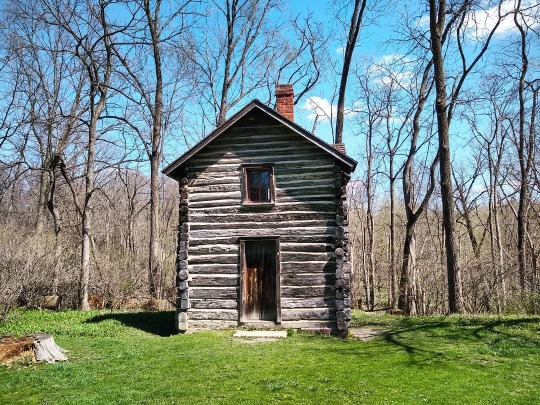
6 notes
·
View notes
Photo

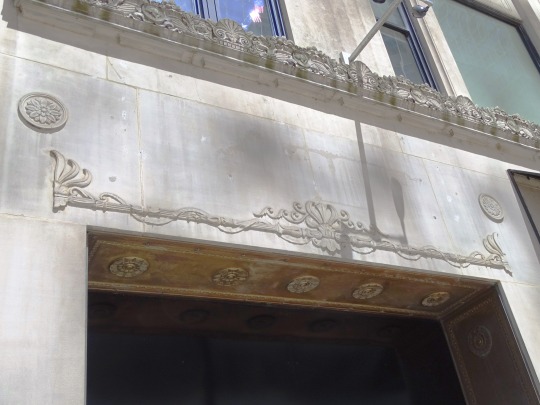
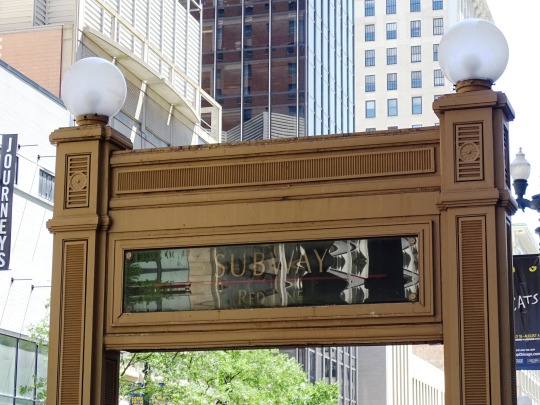
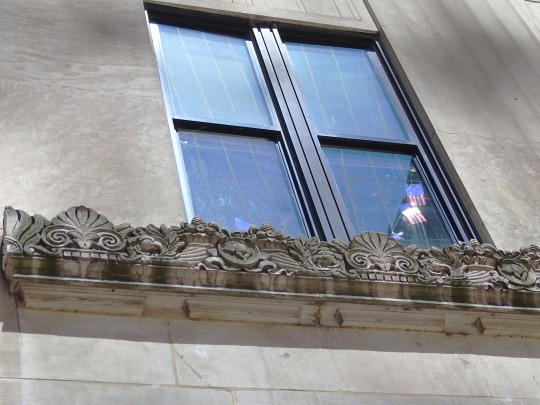
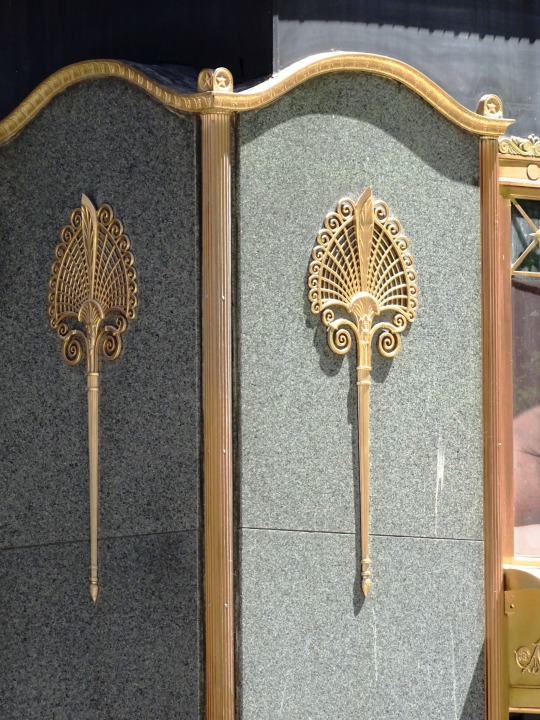
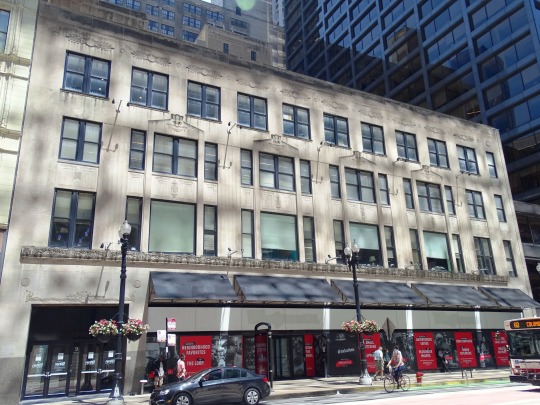



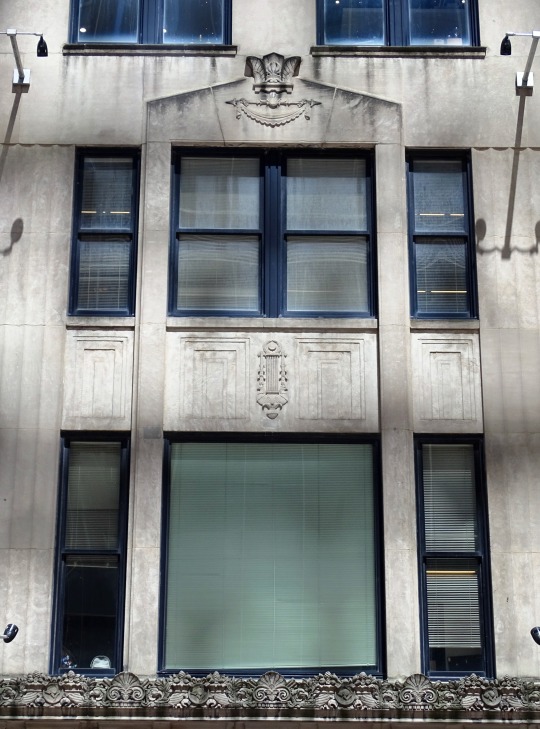
State and Washington Street, Chicago (No. 3)
State Street is a large south-north street in Chicago, and its south suburbs. Its intersection with Madison Street (41.8820°N 87.6278°W) has marked the base point for Chicago's address system since 1909. State begins in the north at North Avenue, the south end of Lincoln Park, runs south through the heart of the Chicago Loop, and ends at the southern city limits, intersecting 127th Street along the bank of the Little Calumet River. It resumes north of 137th Street in Riverdale and runs south intermittently through Chicago's south suburbs until terminating at New Monee Road in Crete, Illinois.
From north to south, State Street traverses the following community areas of Chicago: Near North Side to the Chicago River, Chicago Loop to Roosevelt Road, Near South Side to 26th Street, Douglas to 39th Street, Grand Boulevard to 51st Street, Washington Park to 63rd Street, Grand Crossing to 79th Street, Chatham to 91st Street, Roseland to 115th Street, and West Pullman to 127th Street, where it terminates across from Riverdale Bend Woods. The street runs parallel and adjacent to the Dan Ryan Expressway from 65th Street south to just beyond 95th Street, where State Street crosses the I-94 Bishop Ford Memorial Freeway to enter Roseland.
The northern portion of the Vincennes Trace or Vincennes Trail, a buffalo migration route and an Indian trail which ran some 250 miles to Vincennes, Indiana, was called Hubbard's Trace or Hubbard's Trail since it connected Chicago with Gurdon Saltonstall Hubbard's more southerly trading outposts. It took on the name State Road after some state-funded improvements. Vincennes Avenue, one of Chicago's rare diagonal streets, is a vestige of the Vincennes Trace, and further south the trail eventually became Illinois Route 1. In its early days, State Road was unpaved and known for having mud so deep it was jokingly said that it could suck down a horse and buggy. In the late 1860s, Potter Palmer embarked on efforts to raise the profile and prestige of State Street. He enticed Marshall Field and Levi Leiter to move their prosperous and growing department store, Field, Leiter & Co., to the corner of State and Washington Streets in 1868, and he built his own Palmer House hotel nearby in 1870. For many years the city's most well-known seafood retailer, Burhop's Seafood, was located on North State Street, as well as the historic Chicago Theatre. The latter was lit by Commercial Light Company in 1958, making it the brightest thoroughfare in the world, according to the Chicago Tribune.
Source: Wikipedia
#State Street#urban photography#architecture#clock#cityscape#Chicago#original photography#summer 2019#Washington Street#façade#Art Deco#Marshall Field's Clock#landmark#the Loop#downtown#Midwestern USA#Great Lakes Region#Windy City#Illinois#travel#vacation#detail#window#exterior
7 notes
·
View notes
Text
When Summer Gets Windy
Good morning.
Out the window, grey abides. It’s pasty, punctuated by a green foliage that remind me of my childhood in Seattle. In November, the grey came to the Emerald City, opened up an ample steamer trunk and said “Thanks for having me. I'll be staying until May, maybe June, with a few side trips to Grays Harbor County”.
My mother grew up in Grays Harbor County on the Washington coast and she remembers it as an active, bustling place with the timber and fishing industries providing an abundance of employment to people in Hoquiam, Aberdeen, and other hamlets. I knew it a different way.
That's another story. I don’t mind the grey, though growing up I found it grating by April. Even they I knew we had two months to go, and sometimes there would be guest appearances in July or August, as if somehow Seattleites might have forgotten this so-called “neutral” color. Maybe it is neutral amidst the color wheel. In my heart and head it is not an emotional Switzerland.
Summer in Chicago is a vastly different experience than a Seattle summer. A Venn diagram of the two would reveal shared contours, such as ice cream, the appeal of water (saltier out West), and more time outdoors, at least given the possibility of reasonable temperatures.
I will let you decide how to define reasonable temperatures.
With all of that in mind, I’ve asked some Chicago friends, writers, and other characters for their thoughts on what makes a Chicago summer compelling.
1. Happy Village. I try to make at least one annual summer pilgrimage to Happy Village, where I drink High Lifes in the twinkle-lit beer garden and relive my early 2's when I first moved to Chicago and lived in the Ukrainian Village. Of course, I go far earlier these days because I'm old. My companions and I take breaks from the stickiness by ducking inside for a quick round of Ping-Pong.
2. Water taxi to Chinatown. I haven't done this yet, which makes this second activity aspirationally fraudulent. But my goal this year is to grab an early Sunday AM water taxi from Michigan Ave. to Chinatown where I will promptly stuff my face with dim sum at Phoenix.
3. Cubs game/two Chicago doggies. Despite Wrigleyville's disconcerting transition into Rosemont, absolutely nothing beats a summer day at Wrigley Field. This is baseball for the baseball lover—minimal gimmicks and visual distractions—just timeless organ jams, manual scorekeeping on the ole' green board, snappy Chicago doggies and ice-cold Old Styles (now only securable at a few kiosks—our preferred being on the 500 level behind home plate). Not to mention a lot more hits by the Lovable ... Winners.
Maggie Hennessy writes about food and other matters for TimeOut Chicago and other outlets.
Be a salmon in any Chicago summer: that is, swim upstream against the current. Avoid the Lakefront and its crowds—bike the Boulevard system and check out the inland parks from Jackson Park all the way up to Logan Boulevard.
Before or after a Sox game (you can ALWAYS get a ticket, just go on spur of the moment) go to Palmisano Park (the former Stearns Quarry)on a field trip to Bridgeport, where you can also get the best hot dog or mother-in
law sandwich at Johnny O’s at 35th and Morgan, before quenching your thirst at either Maria’s Community Bar or Bernice’s.
Go to Ping Tom Park and then get dim sum any Sunday morning in Chinatown—be sure to dig the Confucius statue on 22nd Place and the Chinese-American Veteran’s Memorial on the SW corner of the intersection of Archer, Cermak, and Princeton.
Go to Humboldt Park and experience our one inland beach, as well as the endless selection of comida boricua in Chicago’s Puerto Rican heartland. Don’t ride the Lakefront Path, go hit the path along the North Branch/canal, all the way to Wilmette from K-town.
Summer is made for biking, do it.
Bill Savage teaches at Northwestern University, among other pursuits.
Sipping a Negroni while thumbing through a book in the Chicago Athletic Hotel's Drawing Room Eating Quartino's pizza and discussing the hot Chicago topics of the day at Tweed Thorton's Four Star Lunch Moseying over to Old Fashioned Donuts with my mom in our neighborhood (Roseland on 112th/Michigan)
Any trip to my alma mater includes mandatory stops at Two Asian Brothers and Hot”G”Dog (vegetarian Chicago Style hot dogs) Grabbing a Chicago Mix at the Garrett Popcorn Shop in O'Hare for my co-workers in the HBS Initiatives.
Rayshauna Gray is a writer currently working on a book about her family’s history. She is an honorary Boscagoan.
I spend much of the summer looking up. Walking east along Lake Street in the morning, I like to look up and watch El trains chug east with the morning sun behind them. In the evenings, I'm on my back in Millennium Park listening to the Grant Park Orchestra.
But in the middle of the day, I make time to look down. I sit on the steps along the Chicago River, just north of Michigan Avenue, and look down at the water at the boats, kayakers, ducks and critters that might float by. I bring my lunch, often with friends and can't believe this bit of nature is in the middle of the city.
Shia Kapos is a journalist based in Chicago who writes for a number of outlets.
Ride one of the CTA train lines all the way to the end and then see how far from there you can walk back toward where you started from.
That kind of drifting walk is magical, revelatory, entertaining and free.
Kathleen Rooney is a poet and writer.
Fellow flaneurs will enjoy her latest book immensely.
My favorite thing to do, hands down, is to be near or on the water. Whether it’s on one of my friend’s boats or in my kayak, being on the water is cathartic for me.
Being near the water does the same. Being active along the lakefront (although not on those god forsaken bike paths, more like beach volleyball) is key. But then again, so is just sitting on my ass at a lakefront of riverside bar throwing back a Chicago made pint of beer or a non Chicago made glass of rosé. Every year I very much look forward to neighborhood street fairs.
I grew up in old town so the Old Town art fair is near and dear to my heart. Nothing beats grilling out with friends on a blissful, firefly ridden summer night.
And last but not least, Cubs games. Duh. Although if I have to be 100% honest, I prefer watching those in October ;)
Liz Garibay is a Chicago historian, beer expert, and an honorary Boscagoan.
In early August, a few weeks before summer winds to a close, just when I’m starting to panic about Labor Day looming and school supplies lining the shelves at Target, my son’s flag football season begins.
The teams play on Friday nights at Sheridan Park in Little Italy, a stone’s throw from Mario’s Italian Lemonade. Siblings flood the playground to the south. Parents stake out spots with blankets and lawn chairs and coolers filled with beverages to share. (It’s where I first experienced wine in a can. You drink it with a straw.)
Dusk starts to set in around half-time. The park lights go on. The Willis Tower looms to the east, catching and reflecting the last glimmers of the August sun. It’s a lovely little square of chaos and joy and diversity --- kids come from Bridgeport and Logan Square and Bronzeville and the South Loop and Lincoln Park to play in the league.
After the games, we congratulate our kids on their successes (or dry the tears from their losses) and head to Taylor Street for Italian lemonade. Then we head home and start counting the hours until next Friday night.
Heidi Stevens writes the “Balancing Act” column for the Chicago Tribune.
There’s a pretty on-the-nose trope that we put up with the indignities of Chicago winter just to experience the few, fleeting months of summer. Chicago’s summertimes feel earned in the way a warm day in Los Angeles never could (it’s also why some of us scoff at snowbirds who decamp to Florida to wait out the winter).
Two of my favorite activities in the city that really only happen in the summer take place on or near the water. After early memories of enviously watching scullers on the river near Lincoln Park and downtown, I eventually picked up a practical and portable inflatable kayak. I sneak into undisclosed put-in points around the north branch of the river and slide into the water (usually with a buddy and a small cooler of drinks in tow).
There’s a fascinating river culture that, if you walked by the very same houses from the sidewalk, you’d miss entirely. The ecosystem feels richer, but you never forget you’re in a city. Hawks and night herons and turtles co-mingle with groaning steel bridges, train tracks and graffiti.
When I want less isolation, I ride the southern part of the Lakefront Trail and stop off at the 63rd St. Beach. There could be an impromptu gig, pre-planned live music on the lawn and a water playground that I can run through with my summer clothes on (I’ve never been a fan of the beach proper).
If I’m feeling especially motivated, I’ll keep going south until I hit Calumet Fisheries. My reward for a long ride with be a sack of smoked shrimp and salmon that I can eat in the grassy embankment outside that little shrimp and fish shack or on the rickety picnic table that overlooks the 95th St. bridge -- and the lazy barges that float by.
Kim Bellware is a Chicago journalist whose work has appeared most recently in Rolling Stone, Chicago Magazine, and Teen Vogue.
Though I ride my bike year-round, there is something particularly magical about riding my bike during summertime in Chicago. All the cold days fall away and you are left with sunshine and the warm breeze along the lakefront trail and city streets. It is a beautiful feeling that always makes me fall in love with Chicago again.
There are very few things comparable to the energy of summer street festivals in Chicago when all your friends come together to enjoy music, food, or a movie.
For that period of time, the streets become ours.
Lynda Lopez is a reporter for StreetsBlog Chicago and she recently appeared on TV to talk about dockless bicycle initiatives.
What's my favorite Chicago summer activity?
This.
1 note
·
View note
Photo
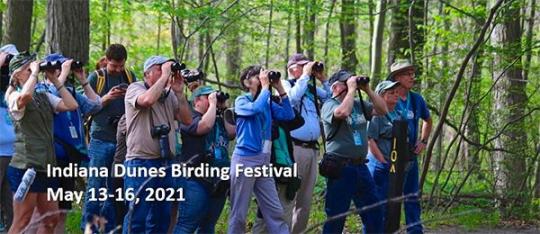
Best Things to do at Indiana Dunes National Park
Best Things to do at Indiana Dunes National Park: Indiana Dunes National Park hugs 15 miles of the southern shore of Lake Michigan and has much to offer. Whether you enjoy scouting for rare species of birds or flying kites on the sandy beach, the national park's 15,000 acres will continually enchant you. Hikers will enjoy 50 miles of trails over rugged dunes, mysterious wetlands, sunny prairies, meandering rivers and peaceful forests. Winter Activities Hiking, cross-country skiing and snowshoeing are popular in the wintertime. If you need snowshoes or cross-country skis, free rentals are available at the Paul H. Douglas Center for Environmental Education for use on the Paul H. Douglas Trail, weather permitting. The best areas to bring your own cross-country skiing or snowshoe equipment include the Glenwood Dunes Trail System and the Tolleston Dunes Trail System. Beaches and Swimming Fifteen miles of sandy beach along the southern shore of Lake Michigan offer a wide variety of recreational activities. Whether it's enjoying a summer sunset stroll or marveling at the arctic beauty of Lake Michigan's shelf ice, you can enjoy the beach in all seasons. There are several beach parking lots along the Indiana Dunes National Park. All beaches and parking lots are open daily from 6:00 am to 11:00 pm and have potable water and restrooms. Additionally, West Beach has showers and lifeguards from the Friday of Memorial Day weekend through the Monday of Labor Day weekend. Biking Discover much more than just sand dunes as you bike on an interconnected trail system that spans 37 miles across the entire length of the national park. A wide variety of trails traverse the various habitats and cultural history of Indiana Dunes National Park. The varying lengths make it easy to choose the trail that's right for you. From a short easy ride to a challenging all-day trek, most of the trails are open all year and the experience will change with each season. Bird Watching Located at the southern tip of Lake Michigan, the national park is an important feeding and resting area for migrating birds. Lake Michigan influences the migration patterns of bird species. During the fall migration, southbound birds follow the north-south shoreline and are funneled into the Indiana Dunes. The large expanse of open water and miles of shoreline also attract large numbers of wintering birds. Indiana Dunes National Park provides an excellent opportunity for birders to see a variety of bird species. Birders can observe hawks during migration from the top of a sand dune, watch waterfowl with a spotting scope from the shoreline, or look for wetland birds in remnant sections of the Great Marsh. Whether you have beginner or advanced identification skills, Indiana Dunes National Park is a great place for birders. The national park plays an important role in the annual Indiana Dunes Birding Festival, which takes place the third weekend in May. This incredible four-day event showcases dozens of birding spots around the region with expert led outings. Indiana Dunes Birding Festival Start making plans for a return to #dunesbirding with the Indiana Dunes Birding Festival, May 13-16, 2021. The 2021 event will be a hybrid/virtual event, with both in-person and virtual birding experiences, stretched over 4 days. Mark your calendars now and plan on joining us for some great spring migration in the Indiana Dunes. Birding in the Indiana Dunes is the best the state has to offer. With its rich biodiversity, varying habitats and miles of Lake Michigan shoreline, the Indiana Dunes is a hotspot for migrant birds. The annual Indiana Dunes Birding Festival is held to celebrate the dunes area's various birding habitats and bird watching opportunities to create a positive impact on the economic, conservation, and environmental education for visitors and residents to the Indiana Dunes region. Fishing & Boating Fishing Fishing is allowed under federal, state and local laws. You need an Indiana Fishing License and a stamp if fishing for trout and salmon. Watch for drop-offs in creeks and along beaches. Sailing & Power-boating Sailing and power-boating are popular on Lake Michigan. There are no marinas, boat rentals or boat launches within the national park. There are services available through commercial and city facilities in Porter, Lake and LaPorte counties. Check these county tourism links for information. Kayaking Kayaking is increasingly popular on Lake Michigan since the inception of the Lake Michigan Water Trail and in area waterways like the Little Calumet River and Burns Waterway. Launching hand-carried, non-motorized boats from any Indiana Dunes National Park beach is permitted with the exception West Beach's lifeguarded swimming area (Friday of Memorial Day weekend through the Monday of Labor Day weekend). Lake Michigan's water conditions can quickly change from calm to dangerous, so check the weather forecast and always use a certified personal flotation device. Canoeing Canoeing is also popular on the region's rivers and waterways, but is generally not recommended for Lake Michigan due to frequent windy conditions and large waves. Canoeing is popular on the Little Calumet River. Hiking Discover much more than just sand dunes as you hike through 14 distinct trail systems covering more than 50 miles of trails. A wide variety of hiking trails traverse the various habitats and cultural history of Indiana Dunes National Park. The varying lengths and difficulty levels make it easy to choose the trail that's right for you. From a short easy stroll to a challenging all-day trek, most of the trails are open all year and the hiking experience will change with each season. Click here to see the Indiana Dunes National Park poster. Rob Decker is a photographer and graphic artist who had the rare privilege of studying under Ansel Adams in Yosemite National Park when he was just 19 years old. Now, Rob is on a journey to explore and photograph all 61 of America's National Parks. He's creating WPA-style posters to help people celebrate their own national park adventures -- as well as encourage others to get out and explore! https://national-park-posters.com/blogs/national-park-posters/best-things-to-do-at-indiana-dunes-national-park?utm_source=rss&utm_medium=Sendible&utm_campaign=RSS
0 notes
Photo

#qotd What is your favorite local hiking spot and why? Comment below! Yesterday we went for a hike at Bailly's Homestead. It has a farmhouse, farm, school, little fur trade stand, meat smoker building, cemetery, and so much more built in the late 1700s early 1800s plus miles of walking trails through the beautiful fall woods and the little Calumet river rushing by. There were so many great nature sounds that I almost relaxed and forgot about the world we live in #walkinthewoods #walks #familywalk #hikingadventures #hiking #hikingtrails #baillyshomestead #thedunes #authorlife #writeralexapostol https://www.instagram.com/p/CHVO0Jsg6qZ/?igshid=x37ek6zcqogh
#qotd#walkinthewoods#walks#familywalk#hikingadventures#hiking#hikingtrails#baillyshomestead#thedunes#authorlife#writeralexapostol
0 notes
Text
Your Standard National Park Trail
I wrote this a few weeks ago, and held onto it to cheer me up on those first cold, windy days of autumn. Oh, there they are. If you walk this trail now, I'd imagine you'll be treated to some amazing fall colors.
I joke with the title, because there's no such thing as a "standard" national park. Still, the first trail we hit on our first visit to Indiana Dunes National Park struck me as being a more or less normal Indiana trail. Woods, gullies, a little river, boardwalk over the swamp--that's Indiana, all over. (You can click on the photos to make them larger.)

We were only a short distance from the dunes, and from Lake Michigan, where no doubt more spectacular views could be found. Certainly this trail wasn't as up and down as Turkey Run State Park, or Brown County, or Clifty Falls State Park way down south. But there's something to be said for just a normal, quiet walk in the woods.

This is assuming you don't find some creepy half-completed Blair Witch Project-like structure in the middle of nowhere. Luckily I'd already done my research: This was someone teaching how the local Native Americans used to make their domiciles. So we continued on our very short hike.
Except, of course, that we took a wrong turn. Instead of hiking the mile and a half we intended, we went for three and a half miles. Believe me when I say that by the time we got to the end, we were very happy that there weren't too many ups and downs this time around.
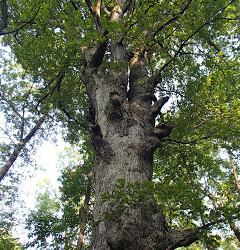
Many places in Indiana that are now parks and nature preserves were once settlements or farms, so it's not unusual to see a few big, old trees surrounded by a bunch of younger trees that just started growing within the last few decades. In my novel Storm Chaser I described a meadow at Chain O' Lakes State Park that doesn't exist anymore--it's a woods. So it was here, but we saw some trees like this one that were gnarly and huge and crazy old.
It was an overcast day, so the pictures didn't pop as well as I'd hoped they would, but they still give a sense of the place, I think. The funny thing is that we were just a short drive from the sprawling Chicago metropolitan area, and from the edge of Lake Michigan you can see the city's high-rises across the water.
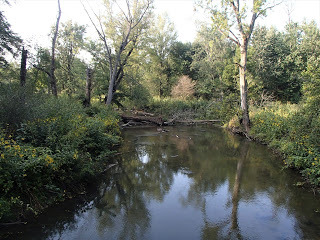
We crossed the Little Calumet River twice. I'd hate to have been canoeing here--there were lots of dead trees fallen into the water, and it would mean a lot of portaging around them. Apparently such blockages are called strainers, which I didn't know, and can be very dangerous, which I did.
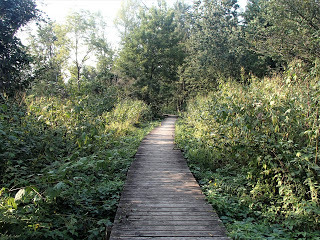
Ah, but we walked, Three and a half miles we walked, around gullies and over the river and through the woods and--wasn't that a song? We also hit a boardwalk across an area that would ordinarily be swampy, but in our drier weather was just mushy. I love boardwalks, and we've followed them through many Indiana parks and preserves. Why do I like them? No idea.
We're hoping to get back to the National Park when the leaves are turning, and maybe get you some dune and lake pictures. Stay tuned.
Here's a link to the Dunes website:
https://www.nps.gov/indu/index.htm
http://www.markrhunter.com/
https://www.amazon.com/Mark-R-Hunter/e/B0058CL6OO
https://www.barnesandnoble.com/s/"Mark R. Hunter"
0 notes
Video
Little Calumet River From a Pedestrian Bridge Crossing (Indiana Dunes National Park) by Mark Stevens
Via Flickr:
A setting with the waters of the Little Calumet River while walking the Little Calumet River Trail with a view looking to the south. This was in Indiana Dunes National Park.
#Azimuth 153#Bailly Chellberg - Little Calumet Loop#Cloudy#Creek#Day 6#DxO PhotoLab 4 Edited#Forest#Forest Landscape#Landscape#Landscape - Scenery#Little Calumet River - Mnoke Prairie Trail#Little Calumet River Trail#Looking South#Lower Peninsula-Heartland#Michigan Lower Peninsula#Midwest-Great Lakes Area#Mostly Cloudy#Nature#New River Gorge and Indiana Dunes National Parks#Nikon D850#No People#North America Plains#Outside#Overcast#Project365#River#Scenics - Nature#SnapBridge#Travel#Trees
1 note
·
View note
Link
Indiana embodies the quintessential essence of Midwestern America.
Home to bustling cities like Indianapolis and lovely little towns like Santa Claus (read more about this town below!), It's a balance between fine art and refreshing natural resting places. to attract tourists from around the world. Whether you are dying to break in your new hiking boots, head out into the prairie on horseback, or experience history face-to-face in their museums and historical towns, Indiana always has something to offer you. Discover the best to do in Indiana.
[toc]
1. Brown County State Park
Affectionately referred to as Indiana Playground, Brown County State Park is an ideal destination offering guaranteed activities to delight visitors of all ages. The park is located in the colonies of Indiana historical artist in the District of Columbia and offers many vacation options for different budgets and hobbies!
It’s conveniently located an hour away from Indianapolis, so you don’t even have to travel far outside the city for this peaceful nature retreat Stay in a romantic cabin or luxurious hotel suite.
The Lodge at the center of the park has an indoor aquatic center with waterslides and a whirlpool for those more inclined to put their feet up and relax. Or, you can rough it at their many campsites and reconnect with nature.
There are many hiking or biking trails through the gently rolling Indiana hills. You can also go fishing or take a horseback ride! You’ll never lack for ways to stay active to do here in Brown County.
2. Antique Alley
While many people are interested in seeing something new or browsing for different accessories, some consider making something “old” their “new”. For those who consider Antiquing a very serious hobby and are always looking for something classic instead of the latest fad, Indiana has the perfect paradise for you: Antique Alley in Richmond County!
Hop in the car and explore a 60 mile stretch of the Historic National Road that links Richmond to Knightstown (even that name seems antique, right?). Over a thousand antique dealers line the national road, their shops filled with treasures awaiting your discovery.
Browse thousands of antiques and experience the peaceful Indiana countryside. The hub of this popular route is located in historic Cambridge City – there are an antique mall and several dealers in a compact 3 block radius!
3. The Children’s Museum of Indianapolis
The Children’s Museum of Indianapolis is the largest children’s museum in the world, with 472,900 of square feet, 5 floors of exhibits and over 100,000 artifacts! There are 3 different sections to choose from the American Collection, World Cultural Collection, and Natural World Collection.
You can see a simulated dinosaur at the Dinosphere exhibit, or an old fashioned steam locomotive! The museum is also home to the world’s largest water clock. Sometimes, adults need to be children again, and parents need to connect with their children on the child’s level.
The interactive displays at this museum are educational and entertaining – everyone loves an old Carousel ride, right? Span that age gap and connect with the younger generation, and keep the Children’s Museum in mind for your next family vacation! You’ll learn something new and have fun while you do it.
4. Spirit of Jasper Train
Nowadays, people jump into their cars without second thoughts and slow down from a distance. We’ve forgotten how we lived before the automobile, such as the invention of the steam engine that revolutionized train travel, a formerly popular way to travel, but a blast for the past for us now.
Whether you're a train enthusiast or simply interested in history, visit the historic train route in Jasper, Indiana, the perfect way to travel back in time. The Spirit of Jasper departs from Jasper's Historic Warehouse and allows you to follow the style to French Lick, Indiana or any of their organized excursions.
We recommend booking your ticket in advance to save a seat on their comfortable, climate-controlled lounge cars. You can even take a romantic dinner train – the meals and drinks are locally catered and the train takes you on a relaxing ride through rural Indiana.
Leave your car in the parking lot and relax; let someone else take care of the transportation for once.
5. Parke County’s Covered Bridges
Parke County calls itself the world capital of covered bridges, and is home to over 30 covered bridges! One of the biggest tourist attractions in the county, people flock in for the self-guided driving tour of these bridges that span 9 counties.
Whether you manage to coincide with their fun-filled Covered Bridges Festival in October or not, the county is full of beautiful views and nature all year around. Bring your camera – Parke County proudly maintains their idyllic roads and covered bridges that harken back to simpler times.
Take your time, around each bend, is a new, quaint world waiting to be discovered. Don’t miss the oldest one, Portland Mills Covered Bridge. You’ll find your pictures come out like an old-fashioned postcard! And stop in at any one of the charming villages along the way – locals are friendly and the food is delicious.
6. Turkey Run State Park
Turkey Run State Park is a nature lover’s paradise. You’ll be in awe of the sandstone cliffs and deep ravines that dot the park, as well as the hemlock groves and old trees that have lived through more history than one could imagine.
Bring your camera and explore nature much like that seen and experienced by the Native Americans hundreds of years ago – it hasn’t changed much. Don’t be surprised if you see a lot of wildlife, deer and turkey vultures are just two of the animal species that call this place home.
Bring your walking shoes and hit the trails, or hop on a horse and go deep into the wilderness. You can camp and enjoy the outdoors, or stay at the Turkey Run Inn if you don’t want to rough it.
Take a canoe out on Sugar Creek or go fishing. Cool off in the summer at their swimming pool or take a dip in the river. Reconnect with Mother Nature when she’s at her finest and let the time here rejuvenate you.
7. Indiana Dunes State Park
Indiana Dunes State Park is located on the southern tip of Lake Michigan and boasts over 15 miles of coastline, 70 miles of hiking trails and more than 300 species of birds. It draws millions of visitors every year for a myriad of reasons – whether you’re a beach bum, hiker, or wildlife enthusiast, the dunes are filled with surprises sure to keep you busy.
Explore the Little Calumet Trail and hike high above, Mnoke Prairie. You can cool off at the Central Avenue Beach or schedule a tour of Mt. Baldy. Bring your fishing pole and rent a boat to see if the fish are biting on Lake Michigan – Latitudes Waterfront Dining will even clean and prepare your catch!
Whether you want a beach getaway or a natural paradise, your options abound here at Indiana Dunes State Park.
8. Holiday World & Splashin’ Safari
Many dreams it is a year-round holiday, and in Indiana, that dream became a reality. This theme park/water park combination is located in Santa Claus, Indiana, and if the name isn’t enough to convince you, its four sections devoted to Thanksgiving, Christmas, the 4th of July and Halloween will.
Initially conceived as a retirement community idea in the 1940s, it soon evolved into a theme park for people of all ages when the founder, Louis Koch, decided to make Christmas happen for the children who visited the town of Santa Claus, only to be disappointed that he wasn’t home.
Pick your favorite holiday and start in that section. Each offers rides, live entertainment, and games and attractions for children and adults of all ages. Take a ride on their famous wooden roller coasters, The Ravine, the Legend, and The Voyage.
It is also a perfect place to cool off in the summer – the water park has the world’s two longest roller coasters, the Wildebeest and the Mammoth, as well as slides and raft rides. You can see Santa Claus wandering in the park, or chatting with George the Eagle in the area on July 4!
9. Indy 500
Ask most people what comes to mind when they think of Indiana, and they’ll usually say NASCAR or the Indy 500. Founded in 1911, the 100th race was held on Memorial Day, 2016.
The race is held at the Indianapolis Motor Speedway; the race car drivers complete 200 laps for a total of 500 miles driven. The Indy 500 is the world's largest one-day sporting event!
Whether you make it in May for the actual race or not, visit the stadium affectionately nicknamed the Yard of Bricks that holds up to 300,000 people on race day – enough space to fit all of Vatican City!
If you DO decide to brave it on race day, find a parking spot and participate in the world’s largest tailgate party: a quarter of a million people drinking beer and eating hamburgers at the epicenter of race car mania. You can even pay $500 and have a professional driver take you for a whirl around the track!
10. Falls of Ohio State Park
Located in Clarksville, Indiana, the Falls of Ohio State Park is right on the banks of the Ohio River and across from Louisville, Kentucky, and was the meeting point for Lewis and Clark before they embarked on their expedition. Keep your eyes peeled while you are here, the park is known for having strange wildlife visitors like alligators and crocodiles!
The most popular attraction at the park is their fossil beds at Jeffersonville Limestone that date back to the Devonian period. Bring your camera to capture the beautiful limestone formations along the Ohio River.
The park also features an interpretive center that takes you through the natural history of the fossil beds and the human pre-settlement and early settlement history of the surrounding areas.
More ideals for you: Top 10 things to do in Knoxville
From : https://wikitopx.com/travel/top-10-things-to-do-in-indiana-703412.html
0 notes
Link
A national park in Indiana has reopened after a chemical spill earlier this month that led to death of nearly 3,000 fish in a Lake Michigan tributary.
An ArcelorMittal steel plant admitted to the spill last week, according to ABC7 News, and said that the leak was caused by a “failure at the blast furnace water recirculation system.”
The leak put toxic levels of both cyanide and ammonia-nitrogen into the Little Calumet River, ABC7 reported Thursday, causing the National Park Service to close the Portage Lakefront and parts of the Little Calumet River on August 16. The trails were kept open, however.
Portage Mayor John Cannon criticized the Indiana Department of Environmental Management, which reportedly responded to reports of “distressed fish” on August 12, but did not notify the public of the hazard until August 15.
“IDEM needs to be held accountable to let our residents and our visitors know what’s going on,” Cannon said in a statement, per ABC7, pointing out that it is peak fishing season and that the beaches are busy because of summertime.
ArcelorMittal said in a statement on August 15 that the company would “work closely with the agencies involved” to rectify the spill, according to a press release from Cannon’s office.
UPDATE: The National Park Service has reopened the waters today at the Portage Lakefront and Riverwalk Beach and the Little Calumet River.
For more information, please follow the link: https://t.co/sovx4g619z.
— Indiana Dunes (@IndianaDunesNPS) August 22, 2019
https://platform.twitter.com/widgets.js
RELATED VIDEO: Grasshoppers Swarm Las Vegas
IDEM and ArcelorMittal did not immediately respond to PEOPLE’s request for comment.
On Thursday, the NPS announced that the level of cyanide found in the water had reached safe levels for three consecutive days, allowing Dunes National Park, which is located on the southern shore of Lake Michigan in Porter, Indiana, to reopen.
RELATED: Instagram Influencers Flocking to Toxic Bright Blue Lake as Government Warns Stay Away
No cyanide was detected on two of the water testing days.
The sampling was conducted by IDEM and ArcelorMittal, but three independent labs came back with identical results, the NPS said, adding that it will “continue monitoring the ongoing water testing to ensure the health and safety of park visitors.”
from PEOPLE.com https://ift.tt/2KPtSOd
0 notes
Text
Best Locations to go Kayaking in Northwest Indiana
New Post has been published on https://www.thecampingcompanion.com/best-locations-to-go-kayaking-in-northwest-indiana/
Best Locations to go Kayaking in Northwest Indiana
Lake George
The popular downtown Hobart lake offers a place to kayak on peaceful waters, though some may not know waterways that extend from the lake can take kayakers on a 2- to 3-mile journey, one store owner says.
Ron Kurth, co-owner of Lake County Divers Supply in downtown Hobart, rents kayaks to those who want to explore Lake George by water.
“Kayaking over here on Lake George is great because people are able to go quite a distance, a few miles out,” he said.
The water trail takes kayakers from the downtown Hobart area south before swinging west. The waterway goes nearly all the way to I-65, he said.
Before beginning a trip, Kurth advises to call and check on construction, which is planned for the 3rd Street bridge near downtown this summer. The construction could prevent kayakers from accessing the other side of the bridge, he said.
Robinson Lake, located west of Lake George near I-65, is another spot for kayakers to explore, as is Deep River Water Trail, which runs from Lake George through Lake Station and Gary for 16 miles before emptying into Lake Michigan.
The Times
Kankakee River
The Kankakee River is a 133-mile waterway that has various access points for kayaking, from Illinois to St. Joseph County in Indiana. Another of the access points is at Dunn’s Bridge County Park in Porter County.
Walter Lenckos, superintendent for Porter County Parks and Recreation, says Dunn’s Bridge provides the only public access to the river in Porter County.
“It is a great fishing spot, has a beautiful turn-of-the-century bridge and a small boat ramp that provides access to the water,” he said.
Those who bring a fishing pole will want to watch out for walleye, bass, crappie, bluegill and Northern Pike, he said.
Provided by Christine Livingston
Lake Michigan
Gary’s Marquette Park and Lagoon offer unique spots for kayaking. Visitors can opt to kayak along Lake Michigan via launch sites at the park and beach area, or can check out the lagoon area, which features a non-motorized watercraft launch.
Whihala Beach in Whiting, Washington Park in Michigan City and Portage’s Lakefront and Riverwalk all have launch sites as well.
The Times
Lakeland Park
Lakeland Park in Burns Harbor offers kayak rentals, as well as paddle boat and row boat rentals, for $3 per hour, said Kim Burton, Burns Harbor park director.
“This has become more and more popular each year,” she said.
While at the 29-acre park, visitors can check out the Little Calumet River fishing access site, or go for a swim in the lake.
The Times
Hansen Park
In addition to kayaking at Washington Park, Michigan City also offers water adventures at Hansen Park, located off E. Street not far from Lake Michigan.
Hansen Park features an ADA compliant kayak launch, the first in the state, says Shannon Eason, assistant park superintendent for the Michigan City Parks and Recreation Department.
The park, within walking distance to downtown Michigan City, also includes a canoe and kayak launch into nearby Trail Creek, which spills into Lake Michigan next to the Old Lighthouse Museum…
Source
http://www.nwitimes.com/lifestyles/leisure/the-perfect-spots-to-go-kayaking-in-northwest-indiana/collection_de2a552d-acc8-5d72-9878-aaa1b6109ace.html
0 notes
Photo
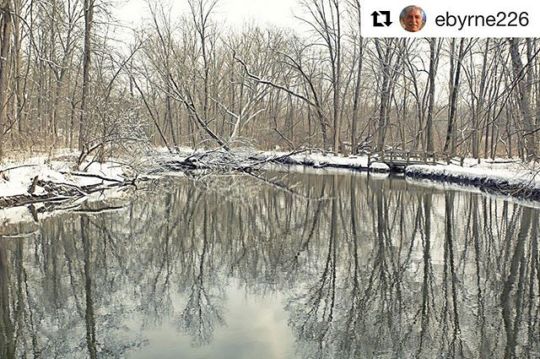
#Repost @ebyrne226 ・・・ "Little Calumet River Trail During February Thaw" #digthedunes #indianascoolnorth #nwindianaphotographer #nwindiana #herelikenootherplace #indiananature #visitindiana #h2gindiana #indiana #indianadunes #indianadunesnationallakeshore #indiana_explored #nwi #hoosierstory #hoosiertography #myindiana #natureindiana #midwest #midwestphotographer #midwestmoment #midwestisbest #midwestsnaps #naturalindiana #exploreindiana #hoosiergrammers #indygrammers #IndianasVeryOwn http://ift.tt/2omHxQs
0 notes
Text
G&W Incorporation and Dune Park Construction: Part One
I will skip a lot of railroad history about Pennsylvania, Ohio, Indiana, Michigan and Illinois. If such history becomes relevant, I will update the blogs or posts as necessary. To get a sense of pre-modern day NWI and Illinois, check out http://oprt.org/history-1.htm.
There are numerous moving parts to the begins of railroad history in Northwest Indiana. I will be very careful with how I describe them and to be as accurate as possible. Also, you may see me interchange the name a lot from “The G&W” to “DPB”. Just note that I am referring to the Dune Park Branch.
NWI looked slightly different back before the G&W was built. Before the railroads, trails were used for wagon trains and foot travel. The trails were first created by Natives, and subsequently acquired by legal and illegal means by the Federal Government and private enterprise. Plank roads were laid out on a lot of these trails. The plank roads later became track beds for the major railroads, more-or-less.
I am not quite sure but I believe that the Buffalo & Mississippi Railroad was the first railroad in the region, being chartered February 6th, 1835. It was not built west that far beyond Michigan City. Its name was change to Northern Indiana Railroad (NIR) on February 6th, 1837 and it ran from the eastern boarder of Indiana to Michigan City and southeast from Michigan City to LaPorte.
Michigan Southern Railroad (MS) planned to use NIR’s line in its push to Chicago, and operations began November 30th, 1850. The MS & MC mergers continued to accelerate throughout the mid-to-late 1800′s. There were numerous name changes, so numerous that I will not waste time listing them all in this post.

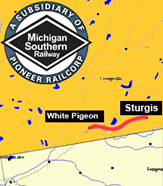
As far as I can surmise, rivals Michigan Central (MC) & Michigan Southern Railroad (MS) were the first two major railroads to cross NWI and access Chicago, with MC being the very first, being maddeningly aggressive with MS in its push from Michigan to Chicago. MS had to use some legal trickery in order to cross more than three miles into Indiana. MS & MC were able to build their connections to Chicago through a series of mergers with smaller railroads into themselves.
Here’s a photo of railroads and pipelines dated 1900.*mistakenly labeled 1850
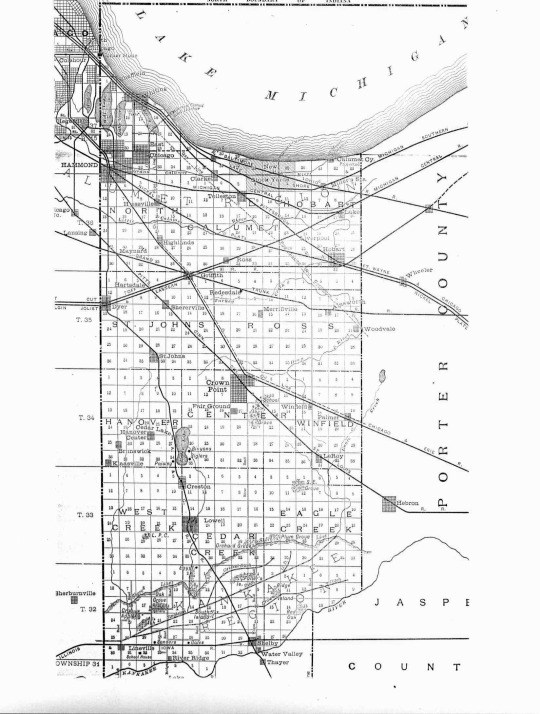
Let’s get a little bit closer.
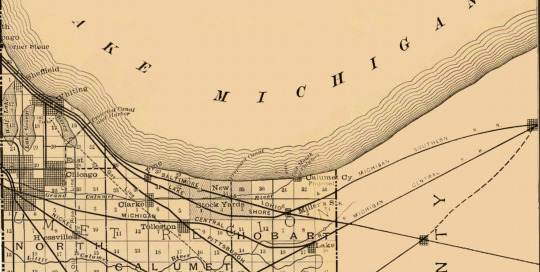
You can see by 1900 there were several railroads coming through the area. The DPB is apart of this, but it’s running through the southern portion of where US Steel sits today. This is a detail that I believe most people don’t realize, and it will have severe consequences for the G&W in the future.
In spite of MC’s aggression, MS’s fortunes changed. NIR eventually merged with MS to form Michigan Southern & Northern Indiana Railroad (MS&NIR) in 1855. The Cleveland, Painesville and Ashtabula Railroad (CP&A), which did not operate in Indiana, leased the Cleveland and Toledo Railroad (C&T) in 1867. CP&A changed its name to Lake Shore Railway (LSR) a year later and in 1869 LSR merged C&T into itself. That same year, MS&NIR merged with LSR to form the Lake Shore & Michigan Southern Railway (LS&MS).
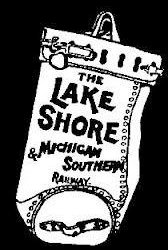
These strategically important series of mergers allowed for the LS&MS to extend from Chicago to Buffalo, NY... as well as whatever ROW’s it had in Michigan and elsewhere in the Midwest.
And finally, the final piece of this puzzle. In 1877 New York Central & Hudson River Railroad (NYC&HR) took notice of the LS&MS. It bought majority stock and became the owner of the entire LS&MS system. This led to the creation of the new New York Central Railroad (NYC). This action would leave NYC as top dog in the region, with MC being a rival.
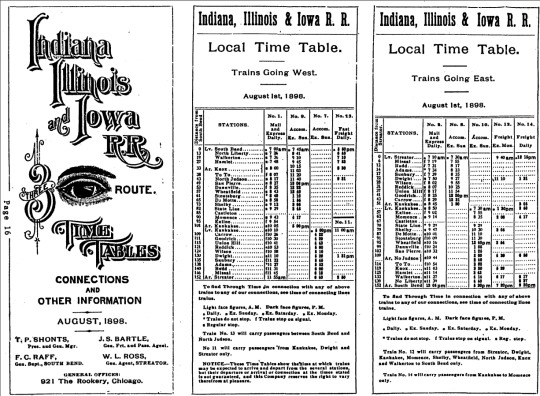
Now - let’s talk about Indiana Harbor Railroad (IHR) and Illinois, Indiana & Iowa Railroad (II&I) or (3I/Old Three I/3 Eye Route). The 3I was a successful coal running railroad that terminated in Churchill, SE of Ladd, IL (southwest of Joliet). 3I built the portion of the line that went from Streator, IL to South Bend, IN. Only a small segment of the Indiana line is still in use.
The photo below shows a line map. The blue line is the Norfolk Southern (NS) Kankakee Route. This is a part of the old 3I Kankakee Belt. The red lines indicate portions of the line that are now abandoned. I bring it up because the 3I line used to connect to the Chicago line via the Kankakee Belt @ South Bend.
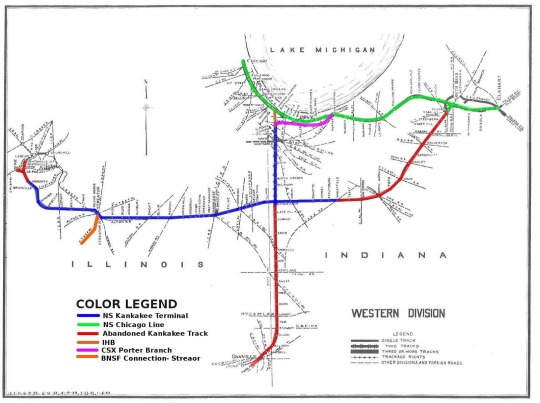
IHR - different from the Indiana Harbor Belt Railroad - was incorporated April 17th, 1896 in Illinois. In 1901 Indiana Harbor (now East Chicago), a city, was constructed to accommodate the Calumet region’s shipping needs, centered around IHR. MC and LS&MS financed the endeavor. In 1905 IHR purchased track from MC in the Calumet District of Chicago, and track that lead to Union Stock Yards. MC & LS&MS obtained whole stock in IHR October 31, 1907, changing the name to Indiana Harbor Belt Railroad (IHBR). This brought the IHR into the NYC system. NYC made Charles W. Hotchkiss General Manager, as Hotchkiss was the creator of the IHR.
Now this bit is confusing Firstly... on August 9th, 1906 NYC merged the 3I with IHR and the Danville and Indiana Harbor Railroad to form the Chicago, Indiana and Southern Railroad (CI&S). YET on the other hand, IHR was reorganized into the IHBR. The confusion comes into play because I’ve read in other forums people who’ve said that IHR was completely different from IHBR, and I find that to be highly unlikely. The IHR is only different from the IHBR in the sense that IHBR was brought into the NYC system through MC & LS&MC's capital stock ownership.
CI&S stock was owned by Lake Shore and Michigan Southern Railway (LS&MS) as well as Michigan Central Railroad (MC). Bear with me. CI&S’s stock was owned by LS&MS and MC. New York Central (NYC) owned stock in both LS&MS and MC. Get it? Got it? Good.
Here’s the critical part.
MS were the ones who originally built the line that would later become the DPB. It had track laid that ran west through the north end of Gary. I believe it was called the Indiana Harbor Lake Shore Line (or branch) or something close to it.
This can be proven by looking at a map. Here is the one claiming to be from 1850 again. I say claiming because on this map it’s labeled LS&MS - yet LS&MS wasn’t incorporated until 1869.
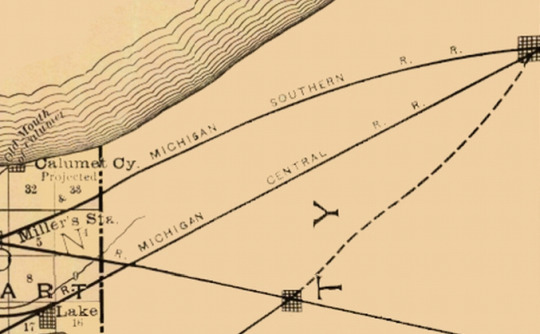
Top right corner - that would be be Baillytown (present day Burns Harbor). You can clearly see where MC ran into Hobart and MS ran westward into Gary (wasn’t Gary then). The MS line ran exactly along the same route the DPB is now. It was not built by IHR, though IHR could have operated along the MS/LS&MS later on before being reorganized into IHBR. You’ll see what I mean below.
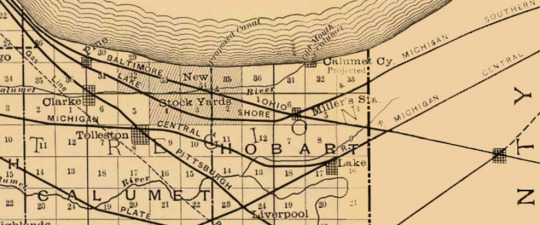
We move the map further west and you can see the path that LS&MS took through Gary. MC’s route can also be seen. See the shaded area at the center of the photo labeled “New Stock Yards”? That’s the property that will later become US Steel. It is unknown to me who first deemed this area to become stock yards before US Steel got involved. Little known fact: There was a lighthouse on the US Steel shoreline. It was first lit in 1837. There is a newer lighthouse built in 1911 that is still in use today but not publicly accessible.
When US Steel bought this property, the LS&MS ran right through it on the southernmost end of the shaded area. LS&MS had to remove a large section of its Lake Shore track, in 1904 - before the steel mill was built. Baltimore & Ohio Railroad (B&O) also had to remove their tracks, but it was not cut off like LS&MS was. We’ll get to that in a future post.
CI&S founded the Gary & Western Railway Company (G&W) the same year construction of US Steel commenced. Some accounts I’ve read say that the G&W was a purely CI&S venture with NYC, others say basically that the G&W was a subsidiary of US Steel and was operated by CI&S. I can’t say either way - a big grey area there. Until proven otherwise - I’ll say that G&W was a subsidiary of US Steel and US Steel worked with CI&S to build it. I seem to remember reading this somewhere, but I can’t remember the source.
According to the ‘Biennial Report of Fred A. Sims Secretary of State of the State Of Indiana for the Fiscal Term Ending September 30, 1908’ - on October 6th, 1906 the G&W received $200,000 in stock.
According to an Indianapolis Star article published Sunday, October 7th, 1906 - Articles of Incorporation were drafted with Secretary of State Fred. A Sims the day before - October 6th, 1906. It stated as follows:
“Gary and Western Railroad Company, to build nine miles of track in Lake County as part of the Chicago, Indiana & Southern Railroad - capital stock, $200,000.”
G&W rebuilt the LS&MS line through Gary, moving it to the south of US Steel and elevating its route to avoid grade crossings. The G&W DPB was a single track, standard-gage, steam railroad. It’s westernmost end begins at Gibson Yard in Hammond, Indiana, heading east through Ivanhoe Junction in Gary, curling north over Route 12/20 (5th Avenue). The eastern portion of the elevated line reconnected with the remaining portion of the original IHR/CI&S line east of Gary Works at a point known as “G&W Junction”. From this junction, the G&W continued east, terminating just west of the area known now as Burns Harbor at a huge sand pit.
LS&MS is who is cited most often for the creation of the DPB, but it is evident that CI&S, maybe in conjunction with US Steel, was the one responsible for reconnecting it after it was removed. It’s hard to nail down exactly when the original track bed was lain by MS between Burns Harbor and Chicago but I estimate that MS did so at least 50 years prior to the construction of US Steel.
This is nowhere near the definitive story of RR history in NWI, but as far as the Dune Park Branch is concerned, this can shed a lot of light.
#dunepark#Dune Park#Gary#Indiana#NYC#New York Central#LS&MS#Conrail#Penn Central#Northwest#Chicago#Railroad History#Gary & Western#G&W
0 notes
Video
Yellow Rocket Wildflowers Seen While Walking the Bailly Chellberg - Little Calumet Loop (Indiana Dunes National Park) by Mark Stevens
Via Flickr:
While walking one of the trails systems in Indiana Dunes National Park. I came across this small meadow of Yellow Rocket wildflowers and got down low, using LiveView with my Nikon SLR camera to compose this image. I later did some post-processing work making adjustments to contrast, brightness and saturation while playing around as I learned how to work with DxO PhotoLab 4.
#Azimuth 184.90#Bailly Chellberg - Little Calumet Loop#Barbarea vulgaris arcuata#Cloudy#Day 6#DxO PhotoLab 4 Edited#Forest#Forest Landscape#Landscape#Landscape - Scenery#Little Calumet River - Mnoke Prairie Trail#Little Calumet River Trail#Looking South#Lower Peninsula-Heartland#Michigan Lower Peninsula#Midwest-Great Lakes Area#Mostly Cloudy#Nature#New River Gorge and Indiana Dunes National Parks#Nikon D850#No People#North America Plains#Outside#Overcast#Portfolio#Project365#Scenics - Nature#SnapBridge#Travel#Trees
1 note
·
View note
Video
Looking Across a Grassy Field While Walking the Bailly Chellberg -Little Calumet Loop (Indiana Dunes National Park) by Mark Stevens
Via Flickr:
A setting looking to the southwest while taking in views across a grassy meadow while walking the Little Calumet River - Mnoke Prairie Trail in Indiana Dunes National Park.
#Azimuth 200#Bailly Chellberg - Little Calumet Loop#Cloudy#Day 6#DxO PhotoLab 4 Edited#Forest#Forest Landscape#Grassy Area#Grassy Field#Grassy Meadow#Landscape#Landscape - Scenery#Little Calumet River - Mnoke Prairie Trail#Little Calumet River Trail#Looking SW#Lower Peninsula-Heartland#Meadows#Michigan Lower Peninsula#Midwest-Great Lakes Area#Mostly Cloudy#Nature#New River Gorge and Indiana Dunes National Parks#Nikon D850#No People#North America Plains#Outside#Overcast#Project365#Scenics - Nature#SnapBridge
0 notes


